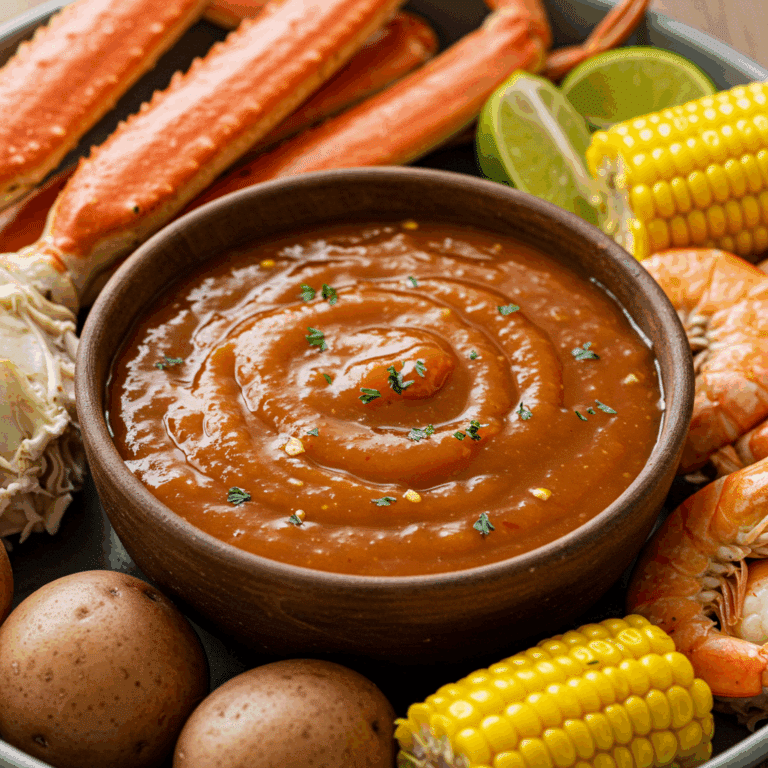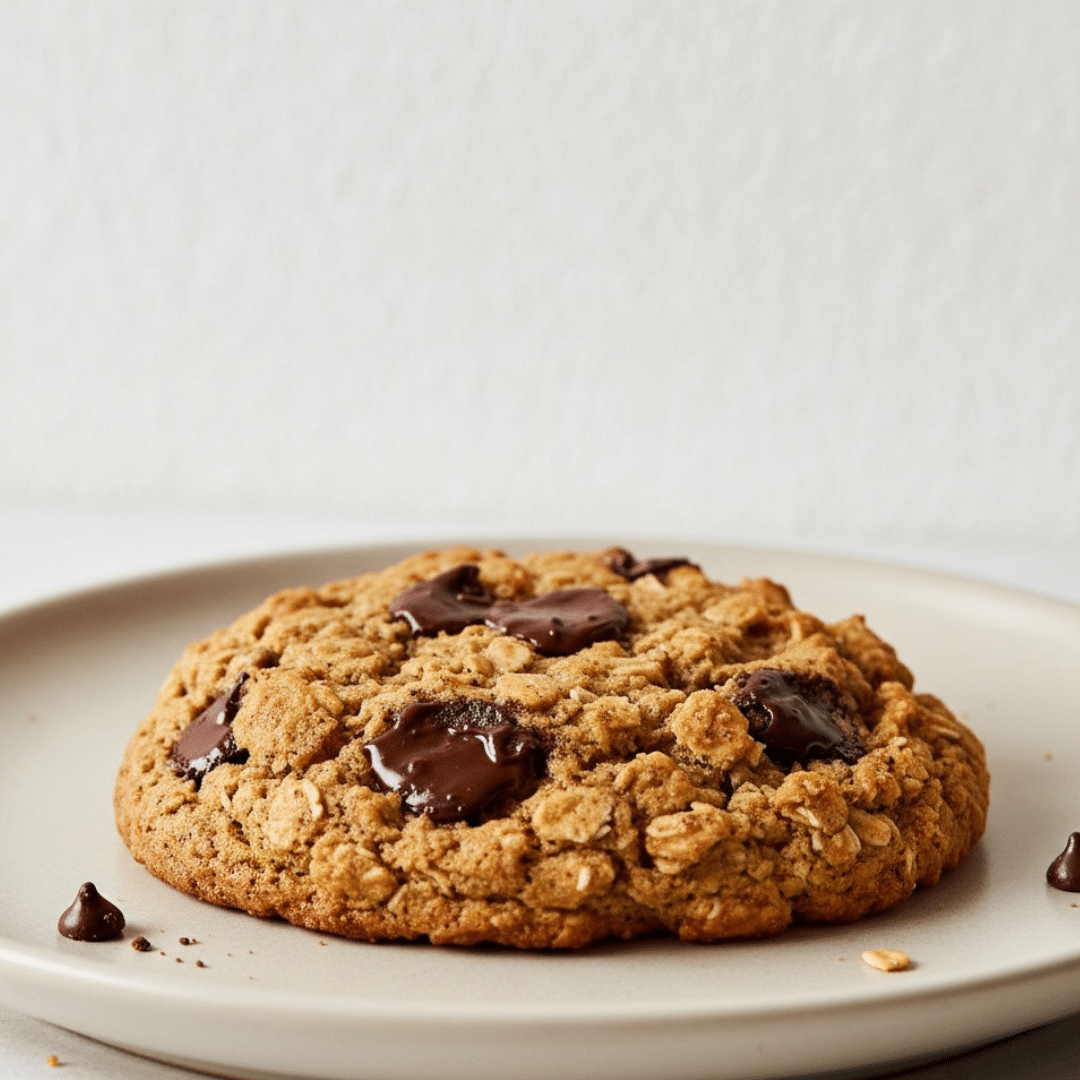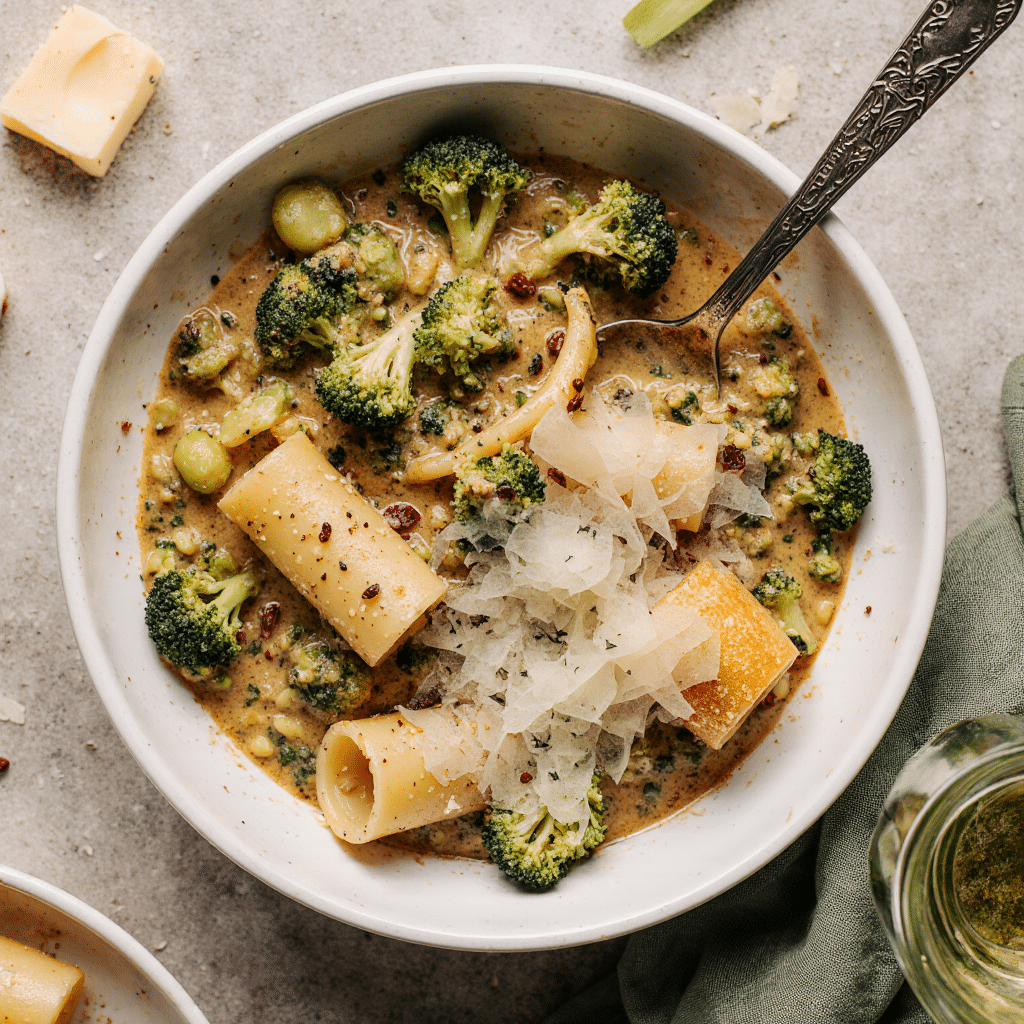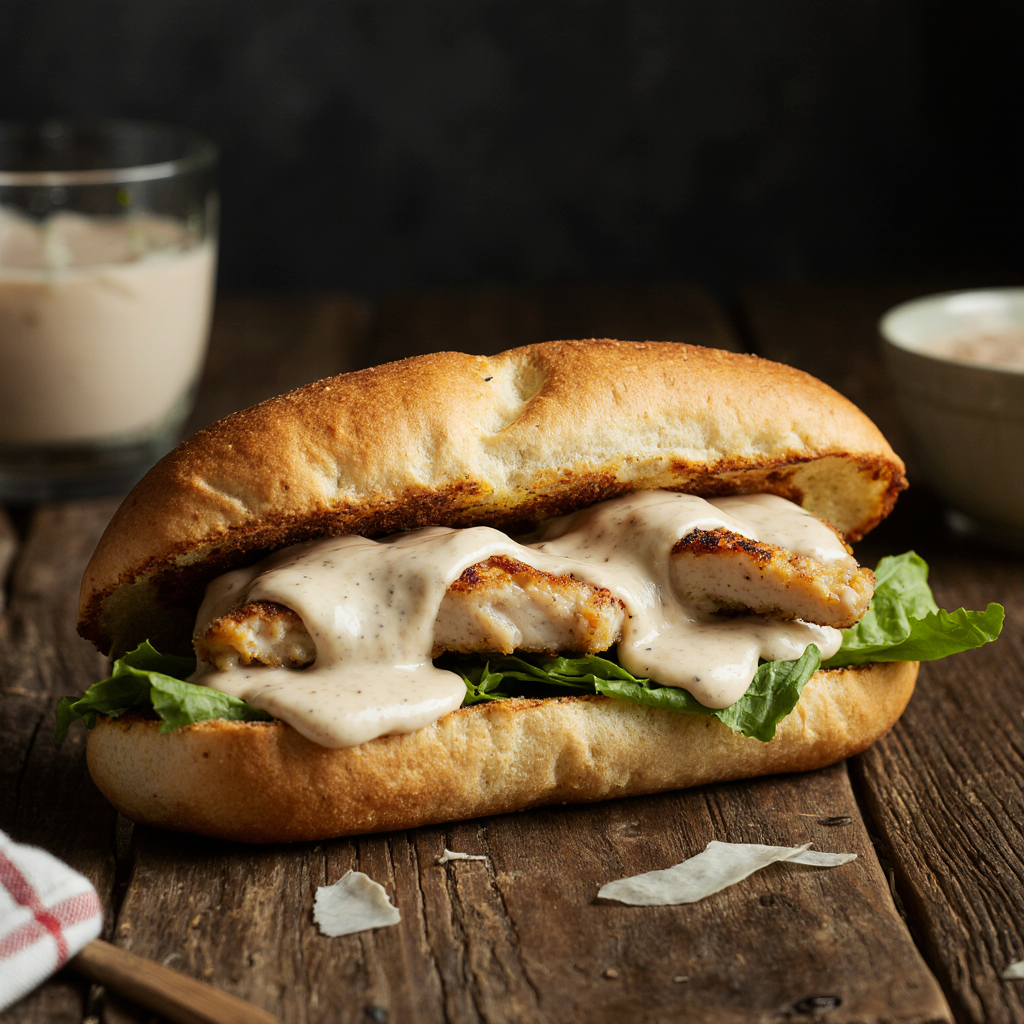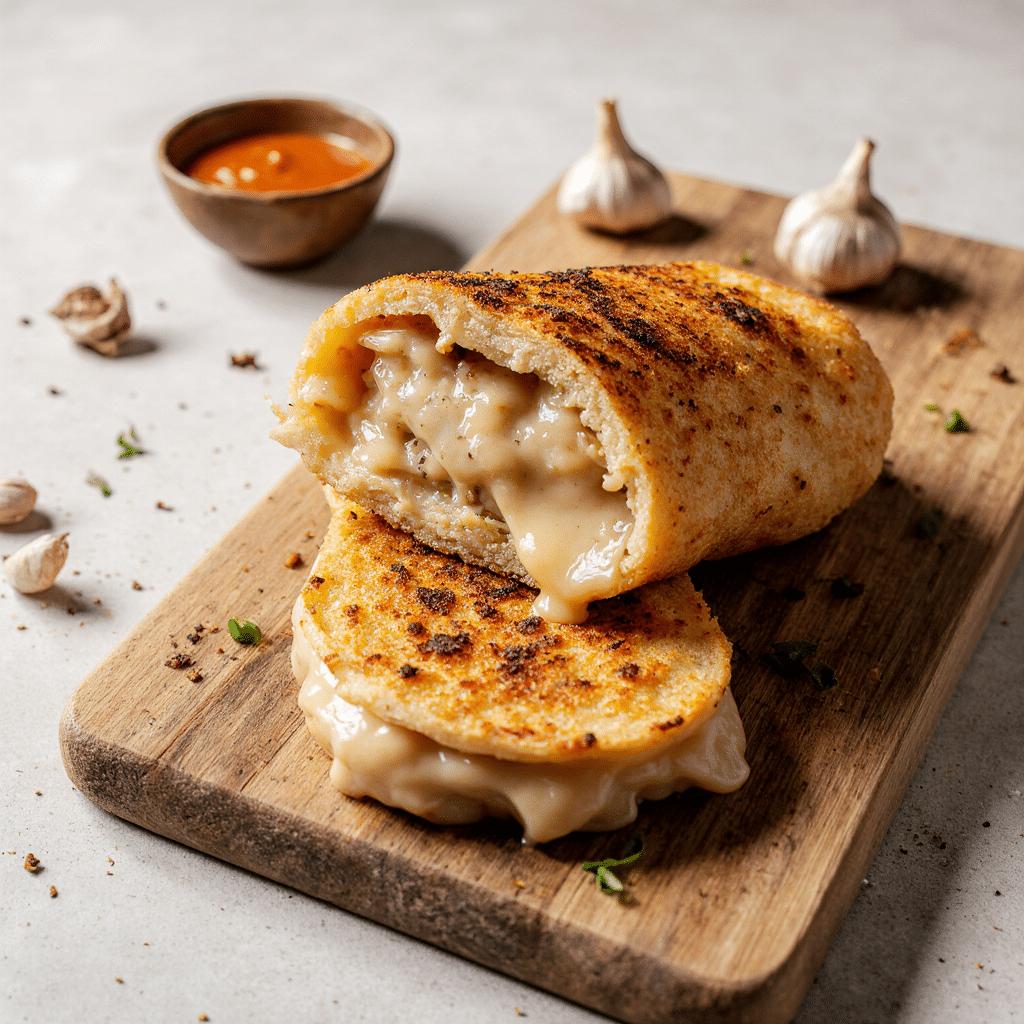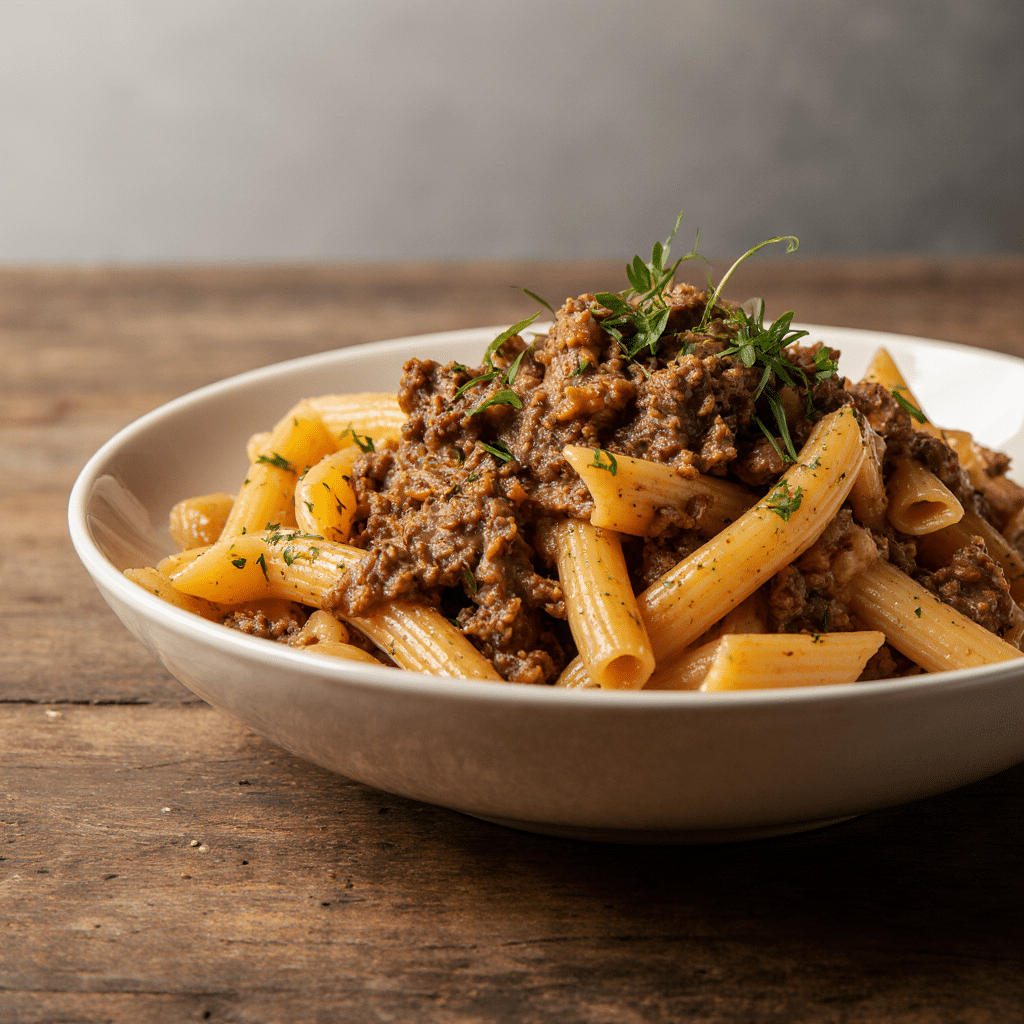There’s something undeniably satisfying about a seafood boil. But what truly takes it from good to unforgettable? The seafood boil sauce.
This bold, buttery, and flavorful sauce is what ties the entire dish together. It’s spicy, garlicky, rich, and slightly sweet with just the right tang from lemon juice. Whether you’re pouring it over shrimp, crab legs, or crawfish or using it as a dip this sauce is the soul of any seafood feast.
In this in-depth guide, you’ll learn exactly how to make a homemade seafood boil sauce from scratch, using ingredients you likely already have in your kitchen. From Cajun heat to Louisiana tradition, from cooking tips to variations, we’ve got everything covered to help you create a sauce that delivers restaurant-level flavor at home.
Table of Contents
Understanding Seafood Boil Sauce
What Is Seafood Boil Sauce and Why It’s a Game-Changer
A seafood boil sauce is a rich, seasoned butter-based sauce designed to amplify the flavor of boiled seafood. Unlike a typical dipping sauce, this blend coats every shrimp, crab leg, and ear of corn, locking in deep, spicy, garlicky flavor.
What makes it so special is how well it complements the natural sweetness of seafood. It’s a Southern-inspired blend that mixes fat (butter), aromatics (onion, garlic), spices (like Cajun seasoning and Old Bay), and acidity (lemon juice) to strike the perfect balance of heat, richness, and brightness.
The Origins and Regional Roots of Seafood Boil Sauce
Seafood boil sauce has its roots in Southern cuisine, particularly Louisiana, Mississippi, and coastal Georgia. These regions are known for communal seafood feasts called boils where massive pots of shellfish, potatoes, corn, and sausage are cooked and spread out on a table for sharing.
The sauce wasn’t always a separate component it evolved as people looked for ways to add extra kick to their boils. Over time, recipes grew spicier and more layered, borrowing from Cajun and Creole traditions. Today, the sauce has become just as central to the experience as the seafood itself. In fact, many home cooks and chefs pour it over the boil and serve extra on the side as a dipping sauce for an added punch of flavor.
This versatile, deeply flavorful sauce is now a must-have in kitchens across the U.S., especially for those craving bold and comforting meals.

Essential Ingredients for the Best Seafood Boil Sauce
Core Ingredients: Butter, Garlic, and Cajun Spice Breakdown
The heart of any great seafood boil sauce starts with the trifecta: butter, garlic, and Cajun seasoning. These three ingredients create a bold foundation that carries the flavor through every bite of shrimp, crab, or crawfish.
Let’s break it down:
- Butter: This is your base. It brings depth to the sauce and helps unify all the flavors. Salted butter enhances the overall taste, though using unsalted gives you more flexibility with seasoning.
- Garlic: Use fresh garlic cloves, not garlic powder. Chop them very finely so their full flavor infuses the sauce as it cooks. The aroma alone will get your mouth watering.
- Cajun Seasoning: A good Cajun blend usually includes paprika, cayenne, garlic powder, onion powder, and black pepper. It adds warmth and complexity to the sauce. Keep an eye on the salt level in your Cajun mix, as certain blends can be quite salty on their own.
In addition to these three staples, the recipe shines because of a few thoughtful additions.
Why Chicken Stock, Lemon Juice, and Brown Sugar Elevate Flavor
To elevate your seafood boil sauce beyond just spicy butter, you need a balance of acidity, sweetness, and depth. That’s where chicken stock, lemon juice, and brown sugar come in.
Chicken Stock: This is a game-changer. Not only does it thin the sauce to a pourable consistency, but it also brings in savory umami flavor. If you’re out of stock, chicken broth will work, but avoid water—it waters down the flavor.
Lemon Juice: Brings a bright citrus edge that cuts through the buttery richness. It lifts the dish, enhancing the seafood with every bite.
Brown Sugar: Just a small amount smooths out the saltiness and spice, adding balance without turning the sauce sweet.
Here’s a quick rundown of the ingredients you’ll need:
| Ingredient | Amount | Why It’s Important |
|---|---|---|
| Salted Butter | 2 cups | The rich, flavorful base |
| Yellow Onion | 1, finely diced | Adds a savory, aromatic depth |
| Garlic | 8 cloves, minced | Key flavor booster |
| Cajun Seasoning | ¼ cup | Signature Southern spice mix |
| Old Bay Seasoning | 2 tbsp | Classic seafood blend |
| Onion Powder | 1 tbsp | Deepens the savoriness |
| Brown Sugar | 1½ tbsp | Balances the spice with subtle sweetness |
| Red Pepper Flakes | 1 tbsp | Adds bold heat |
| Chicken Stock | 1 cup | Gives body and a savory backbone |
| Lemon Juice | 2 tbsp | Brightens and balances the richness |
| Fresh Parsley | 2 tbsp, chopped | Finishing touch of color and freshness |
These ingredients, when combined and simmered properly, create a seafood boil sauce that’s robust, flavorful, and perfect for coating seafood or serving on the side.
Pro Tip : Finely dice your onion and garlic to ensure they melt into the butter instead of dominating the texture.
 Print
Print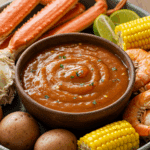
The Best Seafood Boil Sauce Recipe for Irresistible Flavor
- Total Time: 25 minutes
- Yield: 2.5 cups 1x
- Diet: Vegetarian
Description
Ingredients
- 2 cups salted butter
- 1 yellow onion, finely diced
- 8 garlic cloves, minced
- ¼ cup Cajun seasoning
- 2 tablespoons Old Bay seasoning
- 1 tablespoon onion powder
- 1½ tablespoons brown sugar
- 1 tablespoon red pepper flakes
- 1 cup chicken stock
- 2 tablespoons lemon juice (freshly squeezed)
- 2 tablespoons fresh parsley, chopped
Instructions
- Melt the butter in a large skillet over medium heat.
- Sauté the onion for about 5 minutes until soft.
- Add garlic and cook for another 3 minutes, stirring gently.
- Mix in seasonings – Cajun, Old Bay, onion powder, brown sugar, and red pepper flakes. Cook for 5 minutes.
- Pour in chicken stock, stir, and bring to a light boil. Then reduce heat and simmer for 6–8 minutes.
- Finish with lemon juice and parsley. Stir and remove from heat.
- Serve warm over seafood or as a dipping sauce. Enjoy!
Notes
- Adjust the spice by changing the amount of red pepper flakes or adding hot sauce.
- Use unsalted butter and low-sodium stock to better control saltiness.
- For a thinner sauce, add ½ cup more stock.
- Add a splash of Worcestershire sauce for an umami twist.
- Prep Time: 5 minutes
- Cook Time: 20 minutes
- Category: sauce
- Cuisine: american
Nutrition
- Calories: 182 kcal
- Sugar: 2g
- Sodium: 172mg
- Fat: 19g
- Carbohydrates: 4g
- Protein: 1g
How to Make Seafood Boil Sauce Step-by-Step
Cooking Process: Melting, Mixing, Simmering
Once you’ve got all the right ingredients lined up, it’s time to bring your seafood boil sauce to life. The process is fast, easy, and incredibly rewarding your kitchen will smell amazing within minutes.
Here’s how to do it step by step:
- Melt the Butter : Start by adding your salted butter to a large skillet over medium heat. Let it melt gently. Avoid rushing this step—slow melting gives you a silky base.
- Sauté the Onion : Once the butter is melted, add your finely diced onion. Let it cook for about 5 minutes, stirring occasionally. The goal here is to soften it, not brown it.
- Add Garlic : Add the minced garlic and let it sauté for 2 to 3 minutes until fragrant and softened. This stage is crucial—the butter and onion absorb the garlic’s flavor, setting up the entire sauce with rich depth.
- Stir in the Seasonings : Now, add Cajun seasoning, Old Bay, onion powder, red pepper flakes, and brown sugar. Mix well to ensure the spices are fully incorporated throughout the sauce. Let it cook for 5 more minutes—this step “blooms” the spices, releasing essential oils and intensifying the aroma.
- Pour in Chicken Stock : Slowly pour in the chicken stock and stir thoroughly. Let the sauce come to a light boil, then reduce to a gentle simmer. Cook for 6 to 8 minutes, stirring occasionally.
- Finish with Lemon Juice and Parsley : When the sauce reaches a light, silky thickness, take it off the heat. Stir in fresh lemon juice and chopped parsley for brightness and a pop of color.
- Serve Hot : Drizzle your seafood boil sauce over freshly boiled shrimp, crab legs, lobster, or even potatoes and corn. It can also be served on the side as a dipping sauce.
This method ensures every component of the sauce is well-developed and infused with flavor, giving your seafood boil the kind of mouthwatering aroma and taste that lingers in the best way.
Pro Tips for Balancing Heat, Sweetness, and Richness
Getting your seafood boil sauce just right is part technique, part taste-testing. Here are a few ways to personalize the flavor:
- Too spicy? Add more butter or a teaspoon of sugar to mellow it out.
- Too bland? Increase the Cajun seasoning or throw in a dash of hot sauce.
- Too thick? Add a splash of extra chicken stock.
- Too thin? Allow it to cook uncovered for a few extra minutes so the sauce can naturally thicken and concentrate in flavor.
- Too salty? Try reducing the Cajun seasoning next time, or switch to unsalted butter to better control the saltiness.
You can also stir in a few dashes of Worcestershire sauce or a teaspoon of soy sauce for more umami flavor if you want to deepen the savory notes.
Another great option? Stir in a splash of heavy cream for a creamier twist that softens the heat and adds richness to the sauce. It tones down the spice and makes the texture extra velvety, perfect for a buttery seafood dip.

Cajun Seafood Boil Sauce – Southern Heat in a Skillet
What Makes Cajun Seafood Boil Sauce Unique?
Cajun-style seafood boil sauce is bold, smoky, and spicy. It uses classic Cajun flavors like paprika, cayenne, and garlic powder to give your seafood a powerful punch. This version isn’t just about heat—it’s about deep flavor that sticks with every bite.
What sets it apart is the balance between spice and richness. The butter soothes the heat, while the garlic and onions make it savory and irresistible.
If you enjoy bold flavors, Cajun is the way to go.
Key Cajun Ingredients and Their Flavor Roles
Want to build the perfect Cajun seafood boil sauce? Here’s what adds that Southern kick:
- Cayenne pepper: Brings real heat
- Smoked paprika: Adds smoky depth
- Garlic powder: Rounds out the flavor
- Onion powder: Boosts the savory taste
- Hot sauce: Optional, but gives it a fiery finish
To tone it down, reduce the cayenne or use a milder Cajun blend. If you love spice, go ahead and add a splash more hot sauce.
This version of seafood boil sauce is especially good with crawfish, shrimp, or crab.
Louisiana-Style Seafood Boil Sauce: A Cultural Favorite
How Louisiana Influences the Seafood Boil Sauce Recipe
When you think of bold Southern flavors, Louisiana always comes to mind and for good reason. The state’s food culture is rich, spicy, and deeply rooted in tradition. The seafood boil sauce that comes from Louisiana kitchens is more than just something you pour over shrimp and crab it’s an expression of heritage, family, and celebration.
The origin of this sauce goes back to Cajun and Creole communities who made the most of local ingredients like seafood, spices, and herbs. Boil-style meals were practical and social bringing people together around a shared pot filled with shrimp, crawfish, potatoes, and corn. But what made those meals unforgettable was the sauce. Over time, Louisiana cooks developed their own flavorful twist on the traditional seafood boil sauce.
The Louisiana version is packed with garlic, butter, herbs, and bold spices, but it’s more than just spicy it’s complex. You’ll taste layers of flavor: smoky heat from cayenne, the warmth of paprika, the bite of black pepper, and brightness from lemon. There’s also a rich, almost meaty depth that sets it apart from simpler versions. It’s not unusual to hear someone say, “The sauce is the best part!”
What makes this unique is not just the ingredients, but how it’s made and served. It’s usually poured generously over freshly boiled seafood and also offered on the side as a dipping sauce. Locals might even toss corn or potatoes in it, soak French bread in it, or drizzle it over rice. The sauce becomes the centerpiece.
Louisiana’s influence has made this sauce a must-have in boils across the country. It captures everything that Southern cooking is about: comfort, boldness, and flavor that speaks for itself.
Southern Secrets: Worcestershire, Bay Leaf, and Local Spices
To make a truly authentic Louisiana-style seafood boil sauce, it’s all about building layers of flavor. While the base remains butter, garlic, and onion, what takes it to the next level are the small additions Louisiana cooks use to create depth.
Let’s break down a few of those secrets:
- Worcestershire sauce: This is a surprising, yet essential, addition in many Louisiana kitchens. It adds umami—a savory flavor that deepens the sauce and helps balance the heat and salt. Just a few dashes can completely change the sauce’s complexity.
- Bay leaf: Though it’s not always in the spotlight, bay leaf infuses the sauce with a light herbal note. It’s subtle but effective, especially when the sauce is simmered longer. Just make sure to remove it before serving.
- Creole seasoning: Often confused with Cajun seasoning, Creole blends typically contain more herbs like thyme, oregano, and basil. Using a Creole mix adds a different layer of flavor that softens the sauce without making it bland.
- Smoked paprika or cayenne: For that iconic heat, Louisiana-style sauces lean on these two. Cayenne brings fire, while smoked paprika offers deep flavor without overpowering the dish.
- Fresh lemon juice and zest: A squeeze of lemon juice brightens the sauce and cuts through the richness of the butter. Some cooks even add a bit of lemon zest for an extra kick of citrus oil.
What’s great about this version of seafood boil sauce is its versatility. It pairs beautifully with just about everything you’d find in a seafood boil—shrimp, crab, crawfish, potatoes, corn, sausage—and even works well as a drizzle over white rice or grits.
Want to go full Louisiana-style? Serve your seafood on a tray or directly on the table, pour the sauce over the top, and let everyone dig in. Make sure to have napkins nearby—this is finger food at its finest.
In summary, if you’re looking to create a sauce that’s both flavorful and rooted in real tradition, the Louisiana-style seafood boil sauce is the one. It’s bold, complex, and guaranteed to impress anyone lucky enough to take a bite .
Seafood Boil Sauce for Shrimp, Crab, and More
How to Pair Seafood Boil Sauce with Different Seafood Types
One of the best things about seafood boil sauce is how flexible it is. Whether you’re cooking shrimp, crab, or lobster, this sauce brings everything together.
Shrimp is quick to cook and soaks up flavor easily. Toss it in warm sauce just after boiling, and every bite will be packed with garlic and spice.
Crab legs, especially snow crab or king crab, taste amazing when you pour the sauce over them or dip the meat directly. The butter and seasoning bring out crab’s natural sweetness.
Lobster tails also pair well. The bold, buttery sauce complements the tender lobster meat, adding flavor without overshadowing its natural taste.
Crawfish, a Southern favorite, works perfectly with a spicy boil sauce. Toss them in after boiling for an extra punch of flavor.
Why This Sauce Works So Well
Seafood has a mild taste that’s perfect for bold sauces. The mix of butter, garlic, lemon, and spices in a seafood boil sauce adds richness, heat, and brightness in just the right amounts. The sauce clings to the shells, ensuring each bite is coated with bold, savory flavor.
If you want your seafood to hold more sauce, always serve it warm, and don’t forget to let it sit in the sauce for a minute before plating.
Customizing Your Seafood Boil Sauce
Make It Spicier, Sweeter, or More Tangy
The beauty of seafood boil sauce is how easy it is to adjust to your taste. Whether you’re a fan of bold spice or mild flavor, this sauce is fully customizable.
- Want more heat? Turn up the heat by adding more red pepper flakes, a pinch of cayenne, or a splash of your favorite hot sauce. For that Southern-style kick, reach for Louisiana hot sauce or Tabasco.
- Need more sweetness? Increase the brown sugar slightly. It won’t make the sauce sugary—it’ll round out the spice and salt.
- Looking for tang? Use fresh lemon juice or even a splash of vinegar. This helps brighten up the sauce, especially when pairing with rich shellfish like lobster or crab.
Taste your sauce while it simmers and adjust the balance. Everyone’s palate is different, and with a few small tweaks, you can make a seafood boil sauce that’s perfect for your family or event.
Dairy-Free, Gluten-Free, and Low-Sodium Variations
If you have dietary needs, don’t worry. This sauce can easily be made allergen-friendly:
- Dairy-Free: Use vegan butter or olive oil. Vegan butter gives you a similar richness without dairy.
- Gluten-Free: Most ingredients are naturally gluten-free, but double-check your Cajun seasoning and broth to be sure.
- Low-Sodium: Use unsalted butter and low-sodium chicken stock. Also, reduce the amount of seasoning or choose salt-free blends.
These swaps won’t ruin the sauce. In fact, you may find a lighter version even more enjoyable, especially when you want the seafood to shine.
Bonus Flavor Add-Ins
Want to level up your sauce? Try adding:
- Worcestershire sauce for umami
- Paprika (smoked or sweet) for depth
- Lemon zest for extra citrus oils
- Fresh herbs like thyme or dill for a bright finish
With just a few changes, your seafood boil sauce becomes a signature creation.
Storage, Reheating, and Freezing Tips
How Long Does Seafood Boil Sauce Last?
You can store your homemade seafood boil sauce in the refrigerator for up to 5 days—just make sure it’s fully cooled before sealing it in an airtight jar or container.
Need it to last longer? Freeze it! This sauce holds up great in the freezer for about 2 months. When you’re ready to use it again, simply let it thaw in the fridge overnight.
How to Reheat Without Losing Flavor
- On the stove: Pour the sauce into a skillet and reheat over low heat. Stir often to avoid separation.
- In the microwave: Heat in short bursts (30 seconds), stirring between each round.
Avoid high heat—it can make the butter split or burn the garlic. For the best texture, always reheat slowly.

Conclusion
This homemade seafood boil sauce brings bold, buttery, and spicy flavor to every bite. Whether you’re pouring it over shrimp, crab, or crawfish, it transforms a simple seafood boil into a rich and unforgettable meal. With just a few everyday ingredients and under 30 minutes, you can create a sauce that’s better than restaurant quality right in your own kitchen. Try it once, and it’ll become a staple for every seafood feast.
Discover more easy and flavorful recipes on our website. Follow us on Pinterest for seafood boil ideas and on Medium for expert cooking tips and sauce recipes.
Seafood Boil Sauce FAQs
What is a seafood boil sauce recipe?
A seafood boil sauce recipe is a rich blend of melted butter, garlic, Cajun seasoning, Old Bay, lemon juice, and chicken stock. It’s used to coat boiled seafood like shrimp, crab, and crawfish or served on the side for dipping. You can customize it to be spicy, sweet, or tangy depending on your taste.
How do you make a seafood boil?
To make a seafood boil, boil seafood (like shrimp, crab, or crawfish) with corn, potatoes, and sausage. Once everything is cooked, drain and mix it with seafood boil sauce for flavor. Serve on a tray or directly on a table lined with paper—family-style.
What is Cajun seafood boil sauce?
Cajun seafood boil sauce is made with Cajun spices such as cayenne, paprika, garlic powder, and onion powder. It’s spicier than traditional versions and often includes hot sauce or extra red pepper flakes for that signature Southern heat.
Can I use seafood boil sauce for shrimp?
Absolutely. This sauce is perfect for shrimp. Since shrimp absorbs flavor easily, tossing it in warm seafood boil sauce after boiling makes it juicy and full of bold taste.
What is Louisiana-style seafood boil sauce?
Louisiana-style seafood boil sauce adds depth using Worcestershire sauce, lemon juice, herbs, and sometimes bay leaf. It’s deeply rooted in Cajun and Creole traditions and offers a balanced mix of savory, spicy, and citrus flavors.
How do you make seafood dipping sauce from boil sauce?
To turn your boil sauce into a dipping sauce, simply strain it or let it cool slightly so it thickens. Serve it warm in small bowls on the side of your seafood platter. It’s perfect for dipping crab legs, shrimp, or even bread.

